Edhat readers share photos of the partial solar eclipse on Monday, April 8.
By Chuck Cagara
Here in Santa Barbara we observed approximately 50% totality at 11:11 a.m. (48-55% depending upon whom you ask.)
You can also see the large sunspot #3628 in my photo taken (above) with a Thousand Oaks Optical Solar Filter.
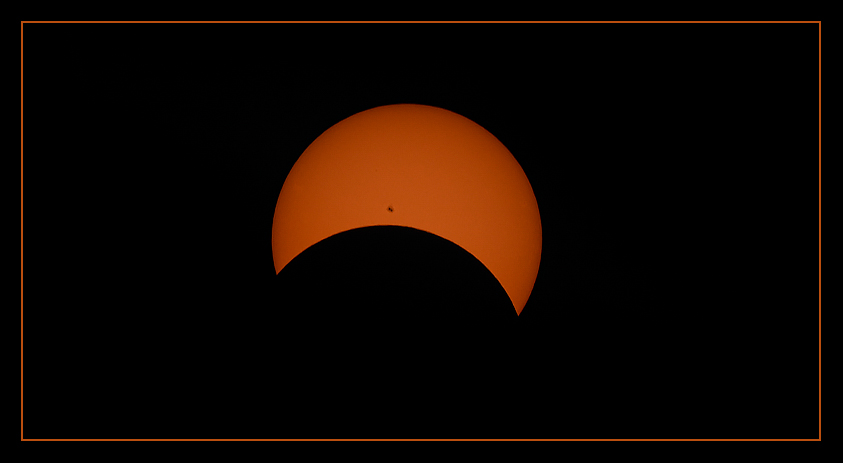
By Fritz Olenberger
Partial Solar Eclipse over Santa Barbara, 11:10 a.m. PDT. The dots on the sun are sunspots.
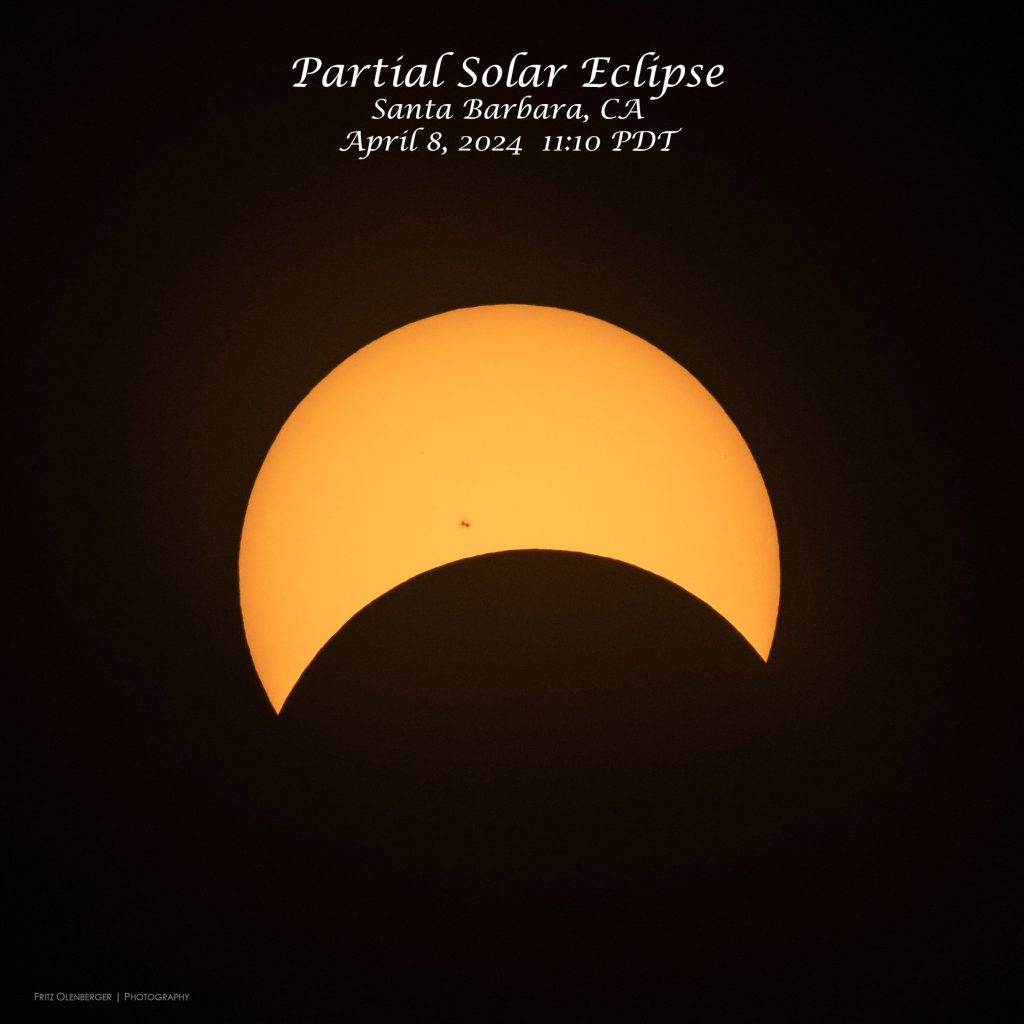
By Patti Gutshall
Nikon P1000. Using a filter but some times the camera does it’s own thing. I call these photo angels. No that is not a spot on my lens even though it looks like an ant.
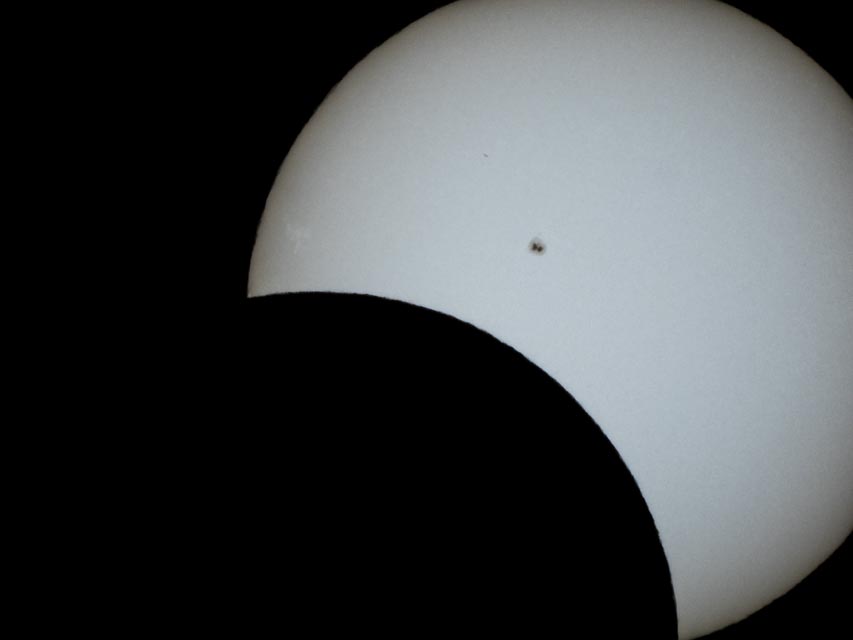

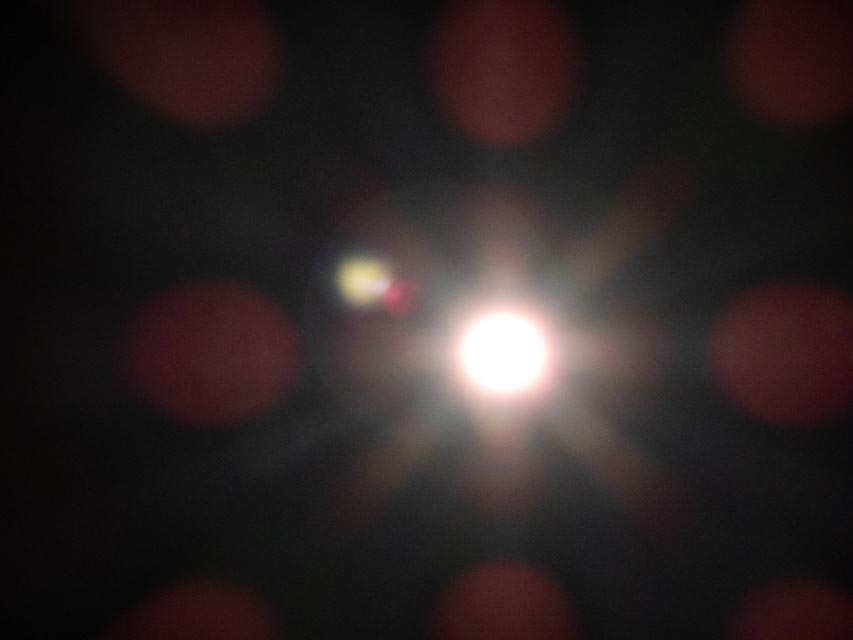


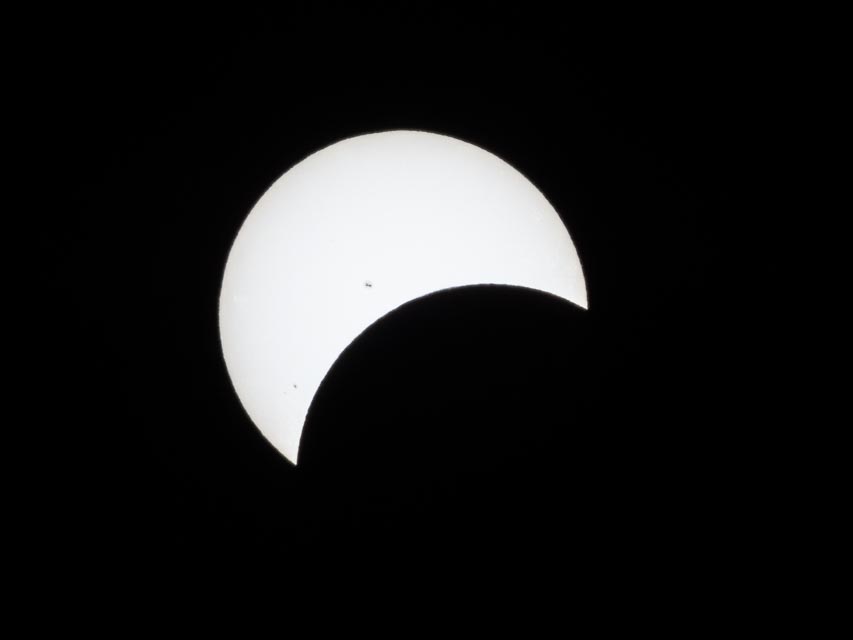
By Sally
I teach swimming at Los Banos for SBCC. A great place for viewing the eclipse!


By Stargazer Ron
Although we had only a partial solar eclipse, clear skies in Santa Barbara on April 8, 2024 made for a pleasant experience as recorded in my little partial video wherein 2+ hours is squeezed into about 1 minute.
The eclipse started shortly after 10:00am and completed at 12:30pm. Here are 5 attached stills in 25 minute intervals.
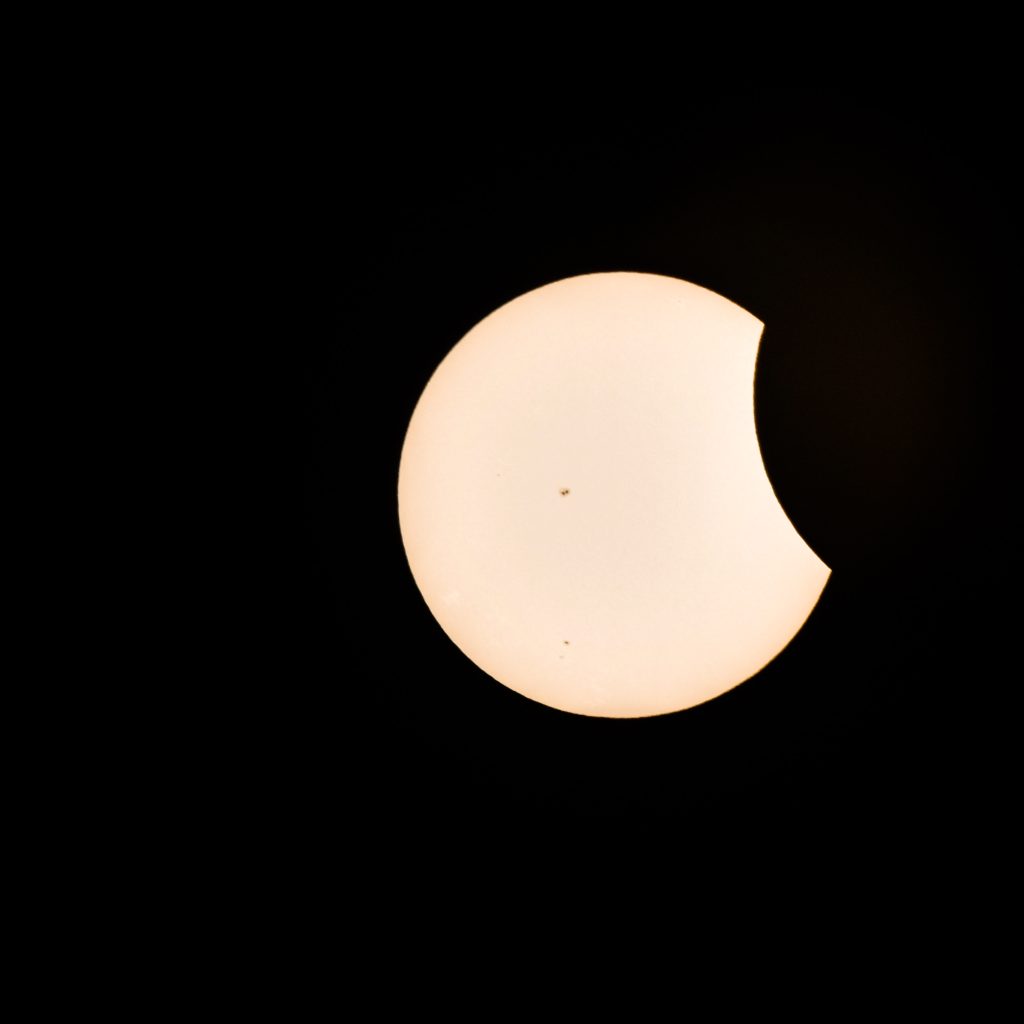
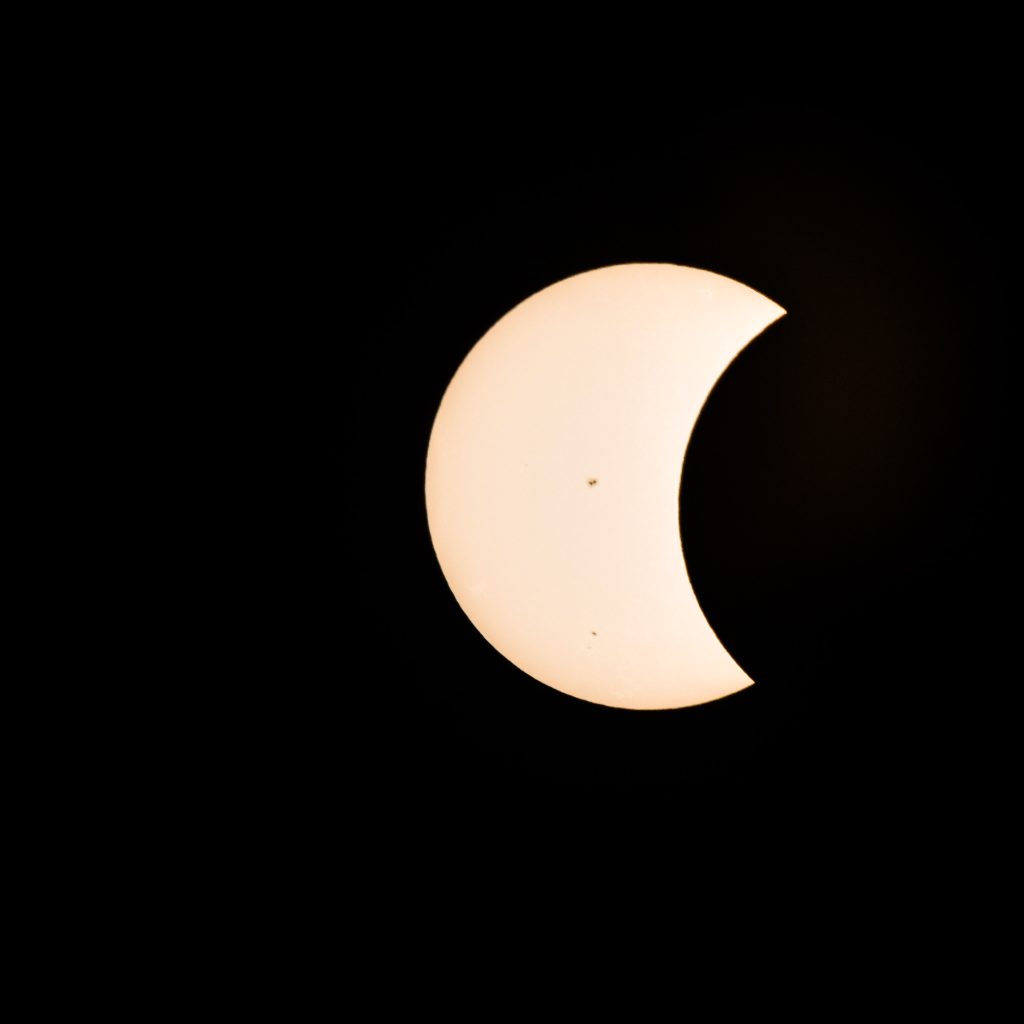
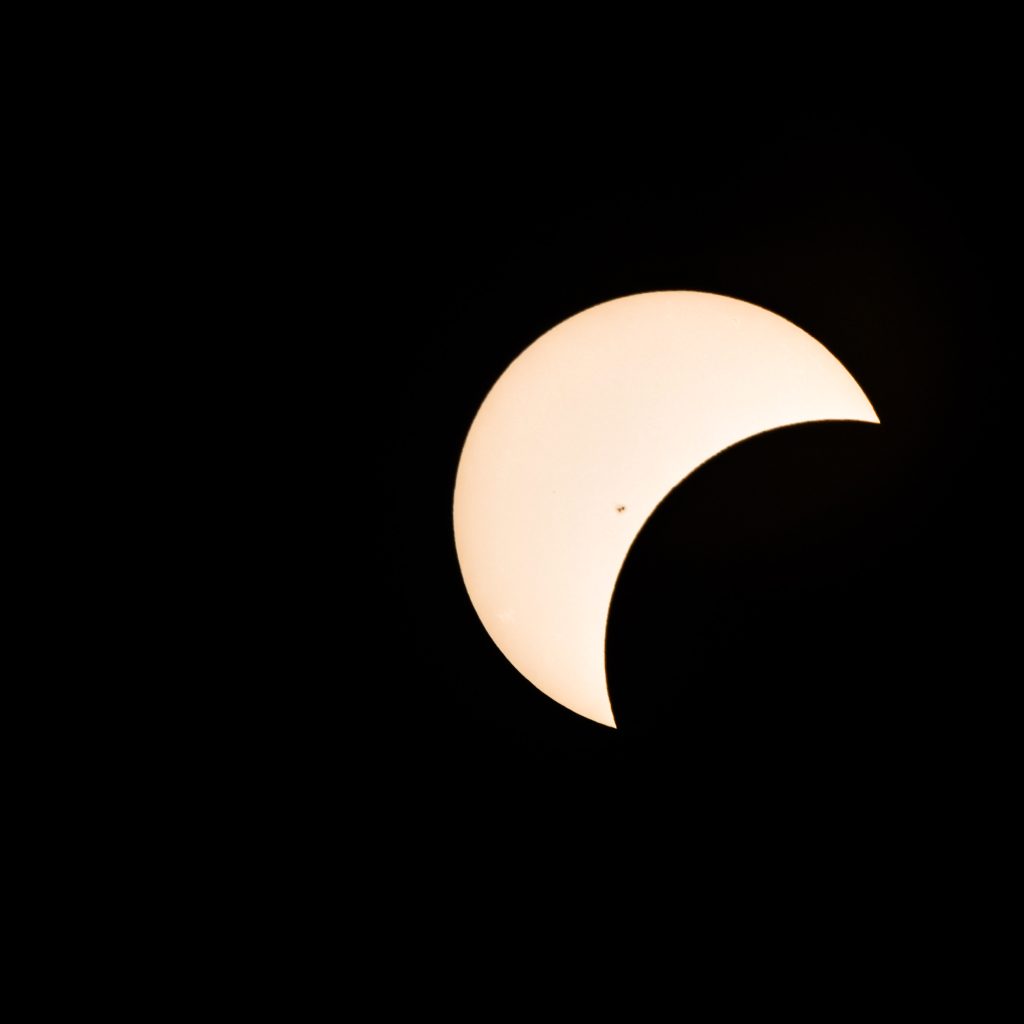
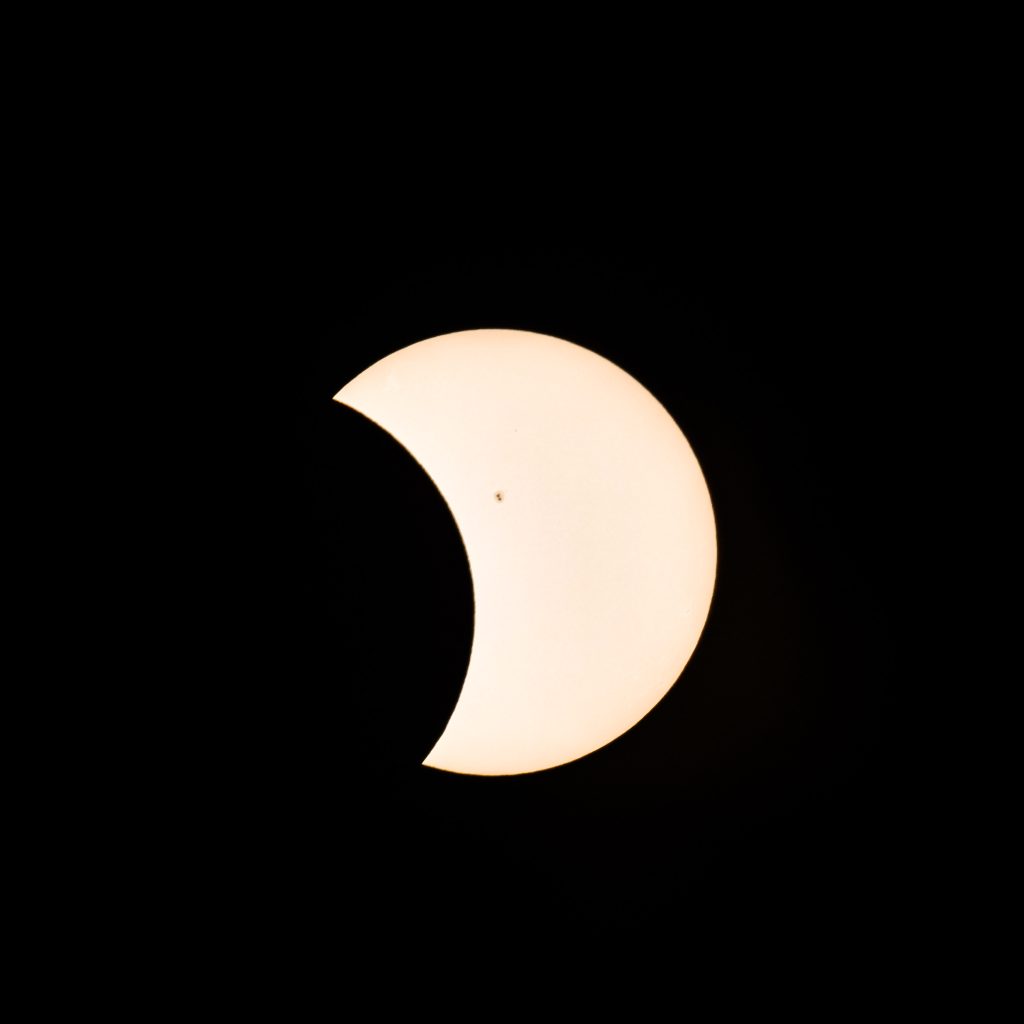
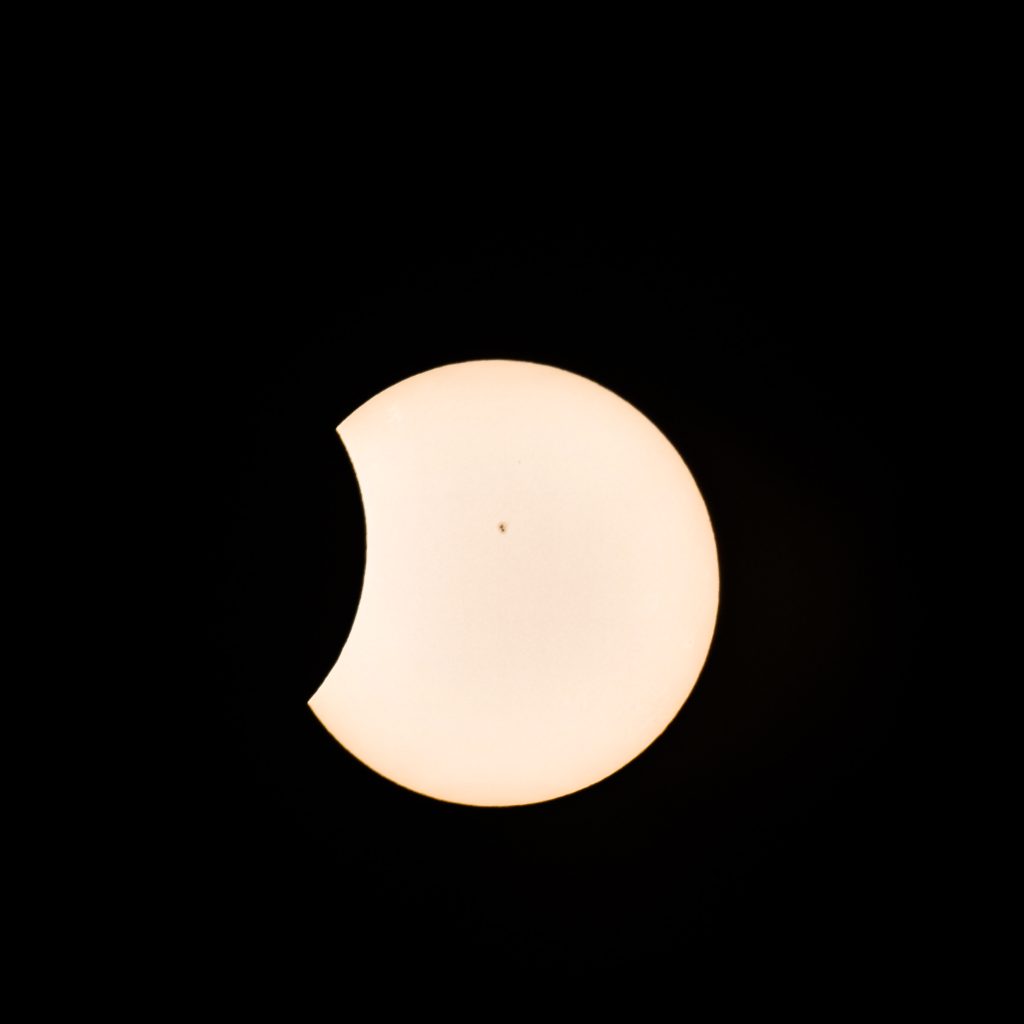
















You’ll see numbers between 40% and 55% for this partial eclipse, because two different measurements are being cited. The 55% number was the magnitude of the eclipse, which is a somewhat specialized measure of how much of the diameter of the Sun was obscured. The more relevant number for percentage of the eclipse was the proportional area of the solar disk obscured by the Moon, which in our case was a little bit less than 45%
What is the small dark spot? I saw it on photos take by others, too.
As I noted in my caption, that is Sunspot #3628, roughly 2-3 times the diameter of Earth.
One good place to follow Solar activity is (among others) http://www.spaceweatherlive.com
Even better, IMO, is spaceweather.com
Absolutely, another vote for Space Weather. Their educational programs are great too.
I’m guessing sun flares?
Nope. A flare is a more transient, explosive event, and it appears as a bright spot. Flares are caused when intense magnetic fields of opposite polarity meet and cancel out, releasing energy.
There are also feathery and looped protrusions that you see in the reddish images from hydrogen-alpha scopes, or around the edge of the totally eclipsed sun, that people mistakenly call solar flares. These are more correctly termed prominences, and are where loops of plasma are suspended in magnetic field lines. When viewed from above against the disk of the sun, they look like blood vessels, and are then called filaments.
It’s a sunspot. They are basically where intense bundles of magnetic field lines enter or leave the surface of the photosphere, cooling it down by diverting upwelling convection, which makes it appear darker than the surroundings.
Very cool video Ron!